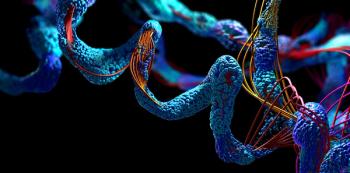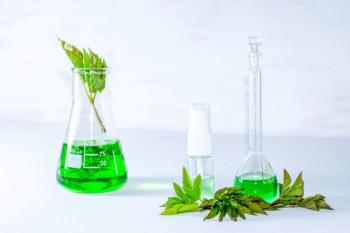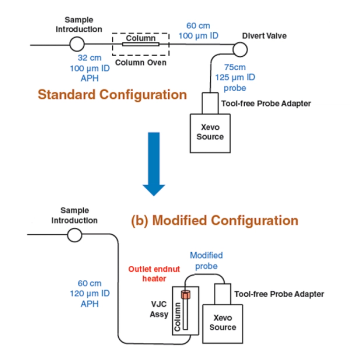
Davy Guillarme of the University of Geneva said in a talk at HPLC 2023 that short columns have shown promise, but ultrahigh-performance liquid chromatography (UHPLC) instrumentation is not yet optimized to realize their benefits.

Davy Guillarme of the University of Geneva said in a talk at HPLC 2023 that short columns have shown promise, but ultrahigh-performance liquid chromatography (UHPLC) instrumentation is not yet optimized to realize their benefits.

In his plenary lecture at HPLC 2023, Michal Holčapek presented his team's findings on how chromatography can help scientists record the human lipodome and better our understanding of diseases.

At HPLC 2023, Matthias Pursch presented his findings on using UHPLC and SEC to monitor small molecule and polymer reactions in real time.

An ultrahigh-pressure liquid chromatography–tandem mass spectrometry method (UHPLC–MS/MS) using polarity switching, preceded by solid-phase extraction (SPE), was used to quantify eight ultraviolet filter (UVF) compounds in chlorinated outdoor pools in Winnipeg.

A research team has developed a fast and sensitive method using UHPLC–MS/MS to simultaneously detect the nematicide fluensulfone (FSF) and its two major metabolites in different agricultural soils, providing valuable insights into the environmental behavior of FSF in soil systems.

Nails were evaluated for their suitability as non-invasive biomarkers for exposure to antibiotics, even those that are commonly prescribed.

A newly developed UHPLC–MS/MS method allows for the accurate analysis of bioactive compounds, including apigenin, apigenin 7-glucoside, and chlorogenic acid, in goat serum.

Why is SFC becoming increasingly more important as a sustainable analytical technique?

The evolution of biomolecule analysis is discussed in this article.

How to enhance the sensitivity, specificity, and speed of metabolite measurement using TIMS, which in turn helps to accelerate the pace of metabolomics research.

A new study has identified potential quality-markers for Eucommiae Folium (Duzhongye), a traditional Chinese medicine, using UHPLC–MS/MS analysis, and has recommended isoquercitrin as a new quality-marker candidate.

This article compares the performance of wide-pore silica monolithic, sub-2µm FPP, and SPP columns, addresses the question of whether 1000 Å or 400 Å SPP columns are more suitable for reversed-phase LC-type protein separations, and presents a kinetic performance comparison of different columns.

A micro-pillar array format for mapping the proteome of human stem cell-derived liver organoids using timsTOF–MS is presented.

This article highlights an advantage of porous graphitic carbon columns, that is their resistance at high temperatures, for the analysis of parabens in foodstuffs.

An introduction from guest editor, Gert Desmet from Vrije Universiteit Brussel, Belgium

Exploring the impact of green chemistry on analytical chemistry and GC is the focus of this instalment of "GC Connections".

A rapid and robust LC–MS/MS method for determining lactulose and rhamnose concentrations in blood plasma was used to determine intestinal permeability from blood plasma, which can help diagnose gastrointestinal diseases such as Crohn’s disease.

Everyone is talking about sustainability, and organizations are creating sustainability programs. But what does green chemistry really mean, and how does it apply to gas chromatography?

Selective pressurized liquid extraction and multilayer solid‑phase extraction methods are described for high‑throughput plant, soil, and water sample preparations. Optimal analytical conditions are described for the improvement of detection sensitivities and coverage. A Source Supported Suspect Screening (4S) approach is described; phytotoxins detected in the source plant were used to improve the identification of phytotoxins in soil and water.

Serial coupling of different column types can provide several important benefits to the chromatographer, including fine-tuning selectivity to separate complex mixtures.

In this extended special feature to celebrate the 35th anniversary edition of LCGC Europe, key opinion leaders from the separation science community explore contemporary trends in separation science and identify possible future developments.


In this extended special feature to celebrate the 35th anniversary edition of LCGC Europe, key opinion leaders from the separation science community explore contemporary trends in separation science and identify possible future developments.

This review article summarizes the results obtained from the combined efforts of a joint academic and industrial initiative to solve the real-life challenge of determining low levels of peptide-related impurities in the presence of the related biologically-active peptide at a high concentration.

An UHPLC–MS research prototype instrument was built to improve the resolution power and the usability of conventional LC–MS hyphenated instruments for routine analyses in pharmaceutical applications.